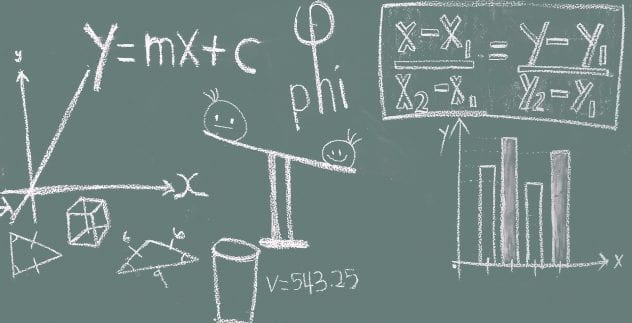By Kavita Hoonjan (Program Coordinator, PDP, SFU; Elementary IE French Immersion Teacher, MEd in IE alum, CIRCE Academic Council member)
The time had finally come. Before me was, at last, the opportunity to observe a student teacher taking flight—taking the learning experiences from her teacher education program and putting them into action during a self-planned Secondary Math lesson on the Pythagorean Theorem. The brave and nervous, yet forward-moving young bird, was taking the leap from the nest and spreading her wings.
As the mentor and the proud ‘mama bird’ I felt an overwhelming rush of excitement and nervous anticipation. My first group of student teachers. My first formal observation. Walking into the busy corridors of the bustling hallways, I wove through the adult-sized bodies to find the school’s office and to then find the classroom on the second floor, third door on the right. The student teacher was busily (and nervously) getting ready for the lesson. As we sat together for the pre-conference, I asked her how she was going to capture the students’ attention, pique their curiosity and evoke their sense of wonder.
She looked at me blankly and almost robotically elaborated that they were going to review the previous lesson’s homework, introduce the new concept of Pythagorean Theorem, copy some notes, do some examples and then have some independent practice time before providing further opportunity for practice by assigning that day’s homework.
Where was the story? How was she planning to create an emotional connection to the content? How would she create a connection between the content, the student, and the world? How would she humanize the meaning of the knowledge?
Despite my multitude of questions, I chose to simply focus on how she was going to introduce the new concepts. She told me that she would explain the definition and provide some visual examples and diagrams. At a bit of a loss for words, I pressed further and asked how she was going to capture the students’ attention. She replied, “I will ask for their attention and then do a countdown. Once I have their attention, I will begin.”
It was now my turn to look at her blankly…
What’s The Problem?
As far as effective lesson planning goes, one could easily argue that there was nothing fundamentally wrong with this lesson. There was a clear introduction, a body and a conclusion to the lesson. There was a review serving as formative assessment, a teaching component, collective practice to aid understanding as well as time for independent practice and application of skills covered. All the ‘teacherly’ components we hope to develop in our pre-service teachers were present.
Content was being covered, assessment strategies were present, an understanding of class management skills was demonstrated, and students were learning. Or, were they? In striving for imaginative practice and active student engagement, many questions arise around the intricacies of this lesson:
Does the lesson provide meaningful, memorable and authentic learning? Will the students be enthused, maybe even excited? Will they wonder, laugh, or emotionally connect with the content? Will any sparks of imagination be activated?
The Difference Imaginative Education Makes
Now, let’s re-imagine the same content with an Imaginative Education approach in mind.
The lesson: Quest for the Holy Hypotenuse
The students could come into the class to find straws of different lengths on their desks. Their quest is to first assemble a triangle with a right angle and to then measure the three sides’ lengths.
Once they have the measurements, their next task is to find the mathematical relationship between the three sides. Progressing further into the quest, the quest-master (teacher) asks them to apply their hypothetical mathematical formula to another group’s triangle to see if it holds true to its holy power. Following a period of time for experimentation, the quest-master gathers the “inquisitors” and asks them to share what comes to mind when they hear the word ‘Pythagoras’.
Who was Pythagoras? What was he famous for? Why is he important? How did he solve the “Quest for the Holy Hypotenuse”?
The teacher could share some background information about Pythagoras in a “Did you know…?” style with some rather interesting, humorous and surprising facts (oooh, the joy of gossip) about him leading up to how the Pythagorean Theorem was developed. The formula is then introduced with some examples to work through. The inquisitors could then continue the quest in finding right angle triangles in the class, around the school and perhaps on the school grounds and to prove if the formula works for them all.
Before leaving class, students could complete an “inquisitor’s” journal entry sharing the challenges and the successes of their quest and writing about what they’ve learned along with what they continue to wonder about. They could be invited to find a new and interesting fact or a joke about Pythagoras or the Pythagorean Theorem for the next few classes.
A New Perspective on Teacher Education
Is teacher education about empowering future teachers with ‘teacherly’ tools, or is it as much, or perchance more, about empowering them to creatively and innovatively engage active learning—to empower their learners to learn?
How do we move pre-service teachers from focusing on the mechanics of teaching, to embracing the wonder of learning, the joy of knowledge and the meaningfulness of and passion for content?
What if teacher education programs not only educated and prepared teachers for the reality and complexity of teaching, but in addition to this, deliberately celebrated imagination and imaginative practice? How can we acknowledge “the imagination as the great workhorse of learning”?
There is no simple response, but we, at CIRCE are working to better understand how to develop imaginative teacher education. Join us in this important topic!




